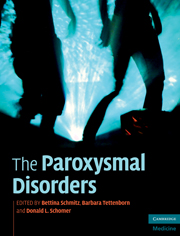
- Cited by 1
-
Cited byCrossref Citations
This Book has been cited by the following publications. This list is generated based on data provided by Crossref.
Ghazi Hosseini, Parsa Mehran Homam, Seyyed Ghazi Hosseini, Parmis Badriahmadi, Nadia and Shamsi, Alireza 2015. The Causes of Secondary Epilepsy in Epileptic Patients Referred to Neurology Clinics of Mashhad Hospitals. Shiraz E-Medical Journal, Vol. 16, Issue. 9-10,
- Publisher:
- Cambridge University Press
- Online publication date:
- December 2010
- Print publication year:
- 2010
- Online ISBN:
- 9780511781780




